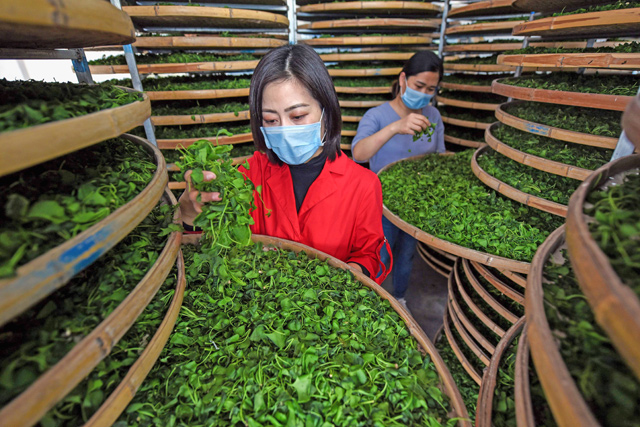BEIJING — China's economy grew at a steady 6.4 per cent pace in the first quarter from a year earlier, defying expectations for a further slowdown, as industrial production jumped sharply and consumer demand showed signs of improvement.
The upbeat readings, which also showed faster growth in retail sales and investment, are likely to add to optimism that China may be starting to stabilise, relieving some investor anxiety over the sputtering global economy.
But analysts say it is too early to call a sustainable turnaround, and further policy support is likely still needed to keep the momentum going. Many had expected a recovery only in the second half of 2019.
Beijing has ramped up fiscal stimulus this year to bolster growth, announcing billions of dollars in additional tax cuts and infrastructure spending, while Chinese banks lent a record 5.8 trillion yuan ($865 billion) in the first quarter, more than the gross domestic product (GDP) of Switzerland.
"We think we need more evidence to call a full-fledged recovery of the Chinese economy. Our view for the economy is still cautious," said Jianwei Xu, senior economist, Greater China at Natixis in Hong Kong.
"We think it [the stronger-than-expected data] is somewhat linked to the stimulus, but we can't attribute it all to it."
Analysts polled by Reuters had expected gross domestic product (GDP) growth to slow slightly to 6.3 per cent in the January-March quarter, the weakest pace in at least 27 years.
Government support measures are gradually having an effect on the economy, although it still faces downward pressure, Mao Shengyong, spokesman at the National Bureau of Statistics, cautioned on Wednesday.
First-quarter growth was supported by a sharp jump in industrial production, which surged 8.5 per cent in March from a year earlier, the fastest pace in over four-and-a-half years. The reading easily beat analysts' estimates of 5.9 per cent and the 5.3 per cent seen in the first two months of the year.
Construction materials such as steel and cement showed strong gains.
Industrial output will likely maintain steady growth, with exports expected to keep expanding, Mao said.
China's exports rebounded more than expected in March. But economists have cautioned that the export gains could have been due to seasonal factors rather than a recovery in sluggish global demand.
Tit-for-tat US-China tariffs also remain in place, although the two sides appear to be nearing a deal that could end their nine-month-long trade war.
The jump in industrial output was also somewhat at odds with trade data last week, which showed imports shrank for the fourth straight month, pointing to still sluggish domestic demand.
Improving retail sales
Retail sales rose 8.7 per cent in March, also exceeding analyst's estimates of 8.4 per cent growth and the previous 8.2 per cent.
Sales were led by sharply higher demand for home appliances, furniture and building materials, pointing to strength in China's residential property market.
New home prices grew slightly faster in March after slowing in the previous month, data on Tuesday showed, bolstered by price gains in smaller cities.
Auto sales extended their decline in March, falling 4.4 per cent from a year earlier compared with a 2.8 per cent drop in the previous month.
The fall in China's auto output and sales are expected to ease and return to growth, the statistics bureau's Mao said.
Fixed-asset investment expanded 6.3 per cent in January-to-March from a year earlier, in line with estimates and picking up from the previous period.
Real estate investment rose 11.8 per cent in the first three months, quickening slightly from the 11.6 per cent gain in the January-to-February.
Analysts polled by Reuters expect China's economic growth to slow to a near 30-year low of 6.2 per cent this year, as sluggish demand at home and abroad and the Sino-US trade war continues to weigh on activity despite a flurry of support measures.
The government aims for economic growth of 6-6.5 per cent in 2019.
China has rolled out many policies to support growth — the key is to implement them, Mao said.
On a quarterly basis, GDP in the first quarter grew 1.4 per cent, as expected, but dipped from 1.5 per cent in October-December.
Analysts do not expect a sharp rebound in China's economy like recoveries in the past, which produced a strong reflationary pulse worldwide, noting its latest stimulus measures have so far been relatively more restrained.
Support measures will take time to fully kick in, and corporate balance sheets are expected to remain under stress if profits are slow to recover from their worst slump in more than seven years.
The central bank has already slashed banks' reserve requirement ratio five times over the past year and is widely expected to ease policy further in coming quarters to spur lending and reduce borrowing costs.
But some analysts said authorities could be more cautious about further stimulus if data remains solid.
